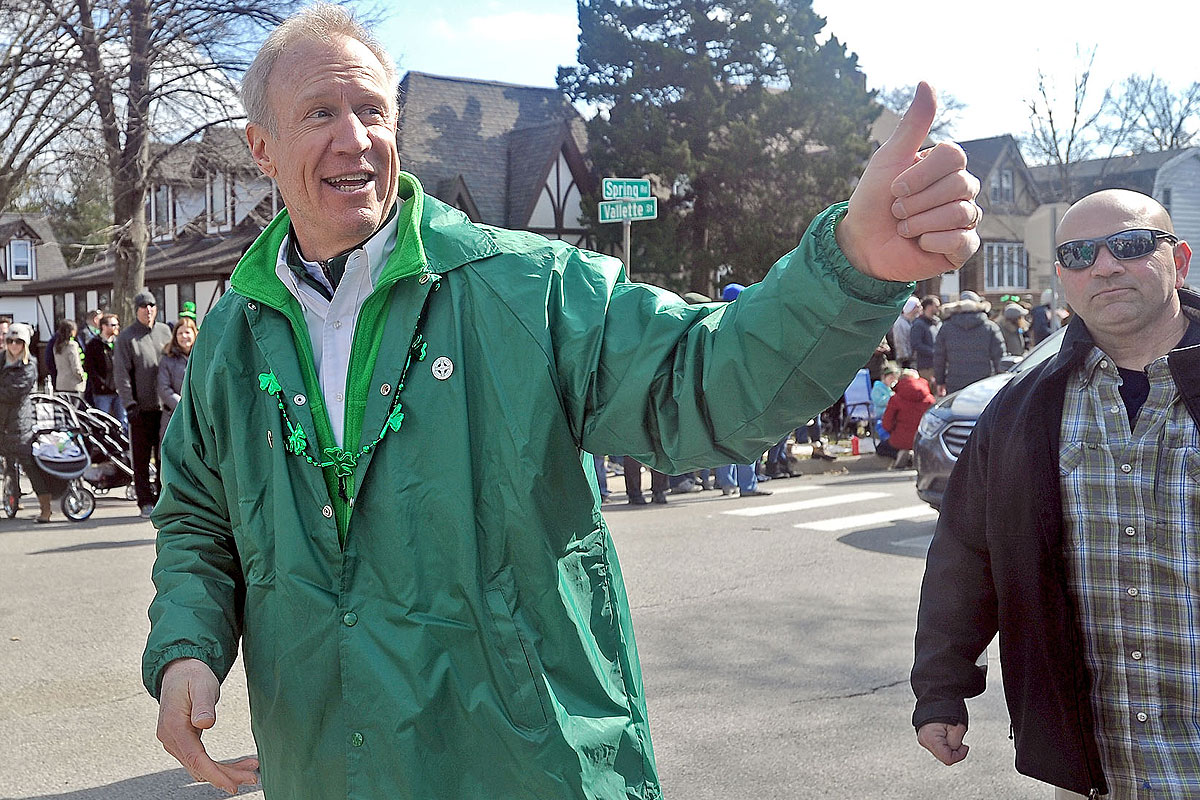The Paul Simon Institute at Southern Illinois University is out with its annual Spring poll on the governor, and it's brutal. At this time last year, Bruce Rauner's approval rating was 41 percent, with 50 percent disapproval and the rest filling in other/neither/don't know territory.
Today he's down to 36 percent approval, with 58 percent disapproval, and a smaller number on the fence; about the best news he can take from it is that Michael Madigan is still less popular (26 percent approval versus 61 percent approval, with more undecideds).
But there's more bad news in the details. Take party affiliation. Last year, the Institute found that independents were split on Rauner. His support among them has completely cratered since.

That's a 13 percentage-point drop. And among Republicans, the drop is almost as bad, but it's not on that tipping point that independent support is.
Another interesting pattern is by income. Rauner was unpopular among lower-income Illinoisans last year, and he's a bit more unpopular this year. But he's fallen considerably among the middle class and above. Among six-digit earners, a 46/50 split wasn't great, but not too bad considering we were well into budgetless gridlock. Now his support among the high-income set is barely distinguishable from lower-income residents.

And his least favorable ratings no longer come from lower-income residents, but from the middle bracket.
There's a similar pattern across regions. Rauner was unpopular in Chicago, for obvious reasons, and it's only changed a bit. But he was doing respectably in the Chicago suburbs and downstate in 2016, considering the circumstances. Not anymore–now he's running a 19-point gap in the suburbs and an 18-point gap downstate.

Ideology presents a more curious picture. The biggest decline in approval was among self-described liberals; he seems to have lost undecided moderates, pairing a four-point decline in approval with a ten-point increase in disapproval; and his support among conservatives is still strong but a bit less so.

There's a modest silver lining for state Republicans more generally. Senate Minority Leader Christine Radogno's job approval rating is one point higher than her disapproval rating, though the catch is that it's 27 percent versus 26 percent—almost half of respondents answered "other, don't know, or neither." Jim Durkin, the House minority leader, isn't far behind with 31 percent approval and 35 percent disapproval.
Meanwhile, Senate President John Cullerton, the Democrat whom Radogno's been working closely with on the still-stagnant grand bargain, has a 14 point approval-disapproval gap going the wrong way. So while it's a brutal result for Bruce Rauner, his unpopularity and the state's general disarray hasn't hurt the Republican legislative leadership too badly; Radogno is even, by the narrowest of margins, technically popular.
But Rauner has big reasons to be concerned. In 2013, Pat Quinn was judged to be the second-most-vulnerable governor in America by FiveThirtyEight, with a net job-approval rating of -24 percentage points. Rick Scott of Florida was third at -20. Scott won r eelection by just one percent of the vote against a weak opponent; Quinn, of course, lost by a substantial margin. Today, Rauner sits at -22 points—in the parlance of the month, on the bubble.



